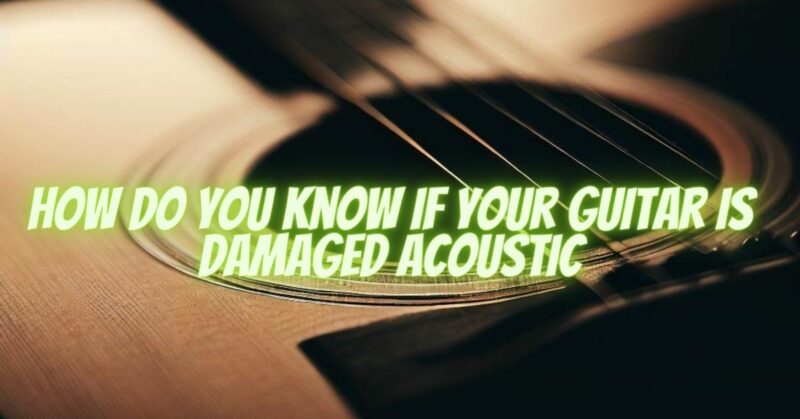Acoustic guitars are delicate instruments, and even minor damage can affect their playability and sound quality. It’s important to know how to identify damage so that you can take steps to repair it and prevent further damage.
Here are some things to look for when inspecting your acoustic guitar for damage:
- Cracks in the wood: Cracks can appear anywhere on the guitar, but they are most common in the neck, body, and bridge. Cracks can be caused by a variety of factors, such as impact, humidity changes, and extreme temperatures. If you see any cracks, even if they are small, it’s important to have them inspected by a qualified luthier.
- Warped neck: A warped neck can cause the strings to buzz and can make the guitar difficult to play. To check for a warped neck, place a straightedge along the length of the neck. If there is a gap between the straightedge and the neck, the neck is warped.
- High fretboard: A high fretboard can cause the strings to buzz and can make the guitar difficult to play. To check for a high fretboard, press down on the strings at the first and twelfth frets. If the strings are touching the frets, the fretboard is too high.
- Loose tuning pegs: Tuning pegs should be tight and should not turn easily. If any of the tuning pegs are loose or turn too easily, they need to be repaired.
- Loose bridge: The bridge should be securely attached to the body of the guitar. If the bridge is loose or moving, it needs to be repaired.
- Buzzing or other strange noises: If you hear any buzzing or other strange noises when you play your guitar, there is probably something wrong with it. Take it to a qualified luthier to have it inspected.
In addition to the above, here are some other things to look for when inspecting your acoustic guitar for damage:
- Dents and scratches: Dents and scratches are usually cosmetic damage and do not affect the playability or sound quality of the guitar. However, if they are severe, they could affect the value of the guitar.
- Missing or damaged parts: Check to make sure that all of the parts of your guitar are present and in good condition. This includes the tuning pegs, bridge, nut, and saddle.
- Finish damage: The finish on your guitar protects the wood from moisture and dirt. If the finish is damaged, the wood can be exposed to these elements and could be damaged.
If you are unsure whether or not your acoustic guitar is damaged, it’s always best to err on the side of caution and take it to a qualified luthier. They will be able to inspect the guitar for damage and let you know if it needs to be repaired.
Here are some tips for preventing damage to your acoustic guitar:
- Store your guitar in a case when you’re not playing it.
- Keep your guitar in a cool, dry place.
- Avoid exposing your guitar to extreme temperatures or humidity changes.
- Be careful when handling your guitar. Avoid bumping it into things or dropping it.
- Have your guitar professionally set up and adjusted once a year.
By following these tips, you can help to keep your acoustic guitar in good condition for many years to come.


